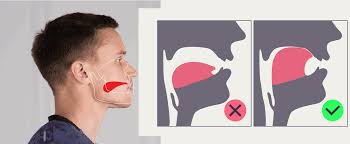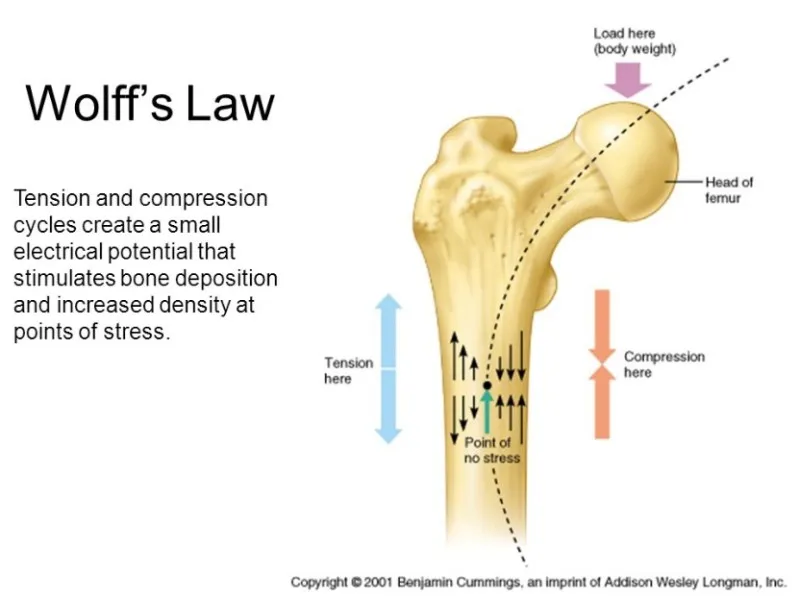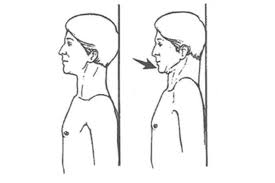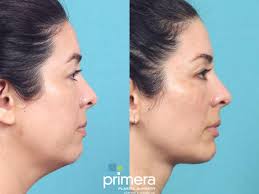D
Deleted member 179953
Blue-Eyes White Dragon
- Joined
- Jul 12, 2025
- Posts
- 175
- Reputation
- 93
So this was supposed to be my 100th post but I got lost in talking with some shitty boy. So now it’s my 104th. Me and ChatGPT(I won’t Look for enough studies etc.) wrote this article which shows the “biggest scam” in looksmaxxing. Also I don’t wanna see any DNR post cus this shit not funny anymore.
Let’s start at the beginning. I don’t know the exact time I think it was around 2020 correct me if I’m wrong. The time where Looksmaxxing started and we all know how it started:
With mewing….
And it still exists till today but many people are misinformed or misled by social media influencers on what mewing rly is and if it even helps (Spoiler, it can work but not for everyone)
This post will provide a science-based analysis of:
(That was ChatGPT part)
The concept of "mewing" has been in the looksmaxxing community since the start. It promises non-invasive enhancement of jawlines, cheekbones, and overall facial aesthetics through simple tongue posture techniques. But how much of it is true and supported by science—and what is just biohacking folklore?
In this post, I’ll break down the real science behind craniofacial development, what mewing can actually do (and can’t), and how age, bone plasticity, and anatomy all play critical roles.
1. The Foundations of Craniofacial Growth
Craniofacial development is largely regulated by genetics, but environmental factors (like oral posture, breathing patterns, and chewing habits) can influence the growth trajectory—especially during childhood.
This shows also the importance of using ur Puberty and its potential as this is the best time for softmaxxing.
Key Study:
A landmark study by Enlow & Hans (1996), "Essentials of Facial Growth", shows that the maxilla (upper jaw) and mandible (lower jaw) continue to grow until roughly age 17-21 in males, although the majority of horizontal growth occurs before puberty.
This means that early intervention (childhood to adolescence) is when oral posture matters most.
2. What is Mewing, Technically?
Mewing refers to maintaining proper oral posture:

This practice is rooted in orthotropics, developed by Dr. John Mew. The hypothesis is that this posture applies upward pressure on the maxilla, promoting more forward and upward facial developmentrather than vertical elongation. (ChatGPT)
3. Does Mewing Actually Work in Adults?
Here’s where we hit the biological wall.
Bone Remodeling in Adults
In adults, the cranial sutures have fused and epiphyseal plates (growth plates) have closed. While bone is not completely static (Wolff’s Law allows for remodeling under mechanical stress*), the amount of pressure from tongue posture alone is extremely limited.
*Wolff's Law, describes how bone adapts to the loads placed upon it. Specifically, it states that bone in a healthy animal will remodel itself over time to become stronger in response to increased stress and weaker in response to decreased stress. This means that bones can change their density and internal structure based on how they are used. (Wikipedia)

Supporting Data:
However: Soft Tissue + Swelling + Fat Loss
*This is not anything I have a study from. But in my experience Chin Tucks help a lot especially with the hyoid bone. (Mewing also said to be helped here, although I can’t confirm this.)
Chin tucks is also on of the few soft maxes which u can see results in a Week or 2


4. Mewing in Adolescents: Potentially More Legitimate
In pre-pubescent and pubescent individuals (ages 8–16), the maxilla and mandible are still actively growing. Oral posture here can influence development direction.
Relevant Case:
This is where orthotropic intervention—not just mewing—has shown clinically significant changes.
5. Mewing vs. Orthodontic & Surgical Options
Mewing is not a replacement for:
6. Practical Takeaways
Key Sources:
Final Thoughts
Mewing can help u Especially when ur in adolescence, but u should not expect much from it. Otherwise Understanding where science stops and speculation begins is key to leveling up without delusion. Use what's real, measure your results, and stay consistent.
(ChatGPT and me)
Let’s start at the beginning. I don’t know the exact time I think it was around 2020 correct me if I’m wrong. The time where Looksmaxxing started and we all know how it started:
With mewing….
And it still exists till today but many people are misinformed or misled by social media influencers on what mewing rly is and if it even helps (Spoiler, it can work but not for everyone)
This post will provide a science-based analysis of:
- Craniofacial growth and its timeline
- The theory and mechanics of "mewing"
- What is possible post-puberty vs. pre-puberty
- Relevant anatomy and physiology
- Actual studies from orthodontics and craniofacial biology
- Practical takeaways
(That was ChatGPT part)
The concept of "mewing" has been in the looksmaxxing community since the start. It promises non-invasive enhancement of jawlines, cheekbones, and overall facial aesthetics through simple tongue posture techniques. But how much of it is true and supported by science—and what is just biohacking folklore?
In this post, I’ll break down the real science behind craniofacial development, what mewing can actually do (and can’t), and how age, bone plasticity, and anatomy all play critical roles.
1. The Foundations of Craniofacial Growth
Craniofacial development is largely regulated by genetics, but environmental factors (like oral posture, breathing patterns, and chewing habits) can influence the growth trajectory—especially during childhood.
This shows also the importance of using ur Puberty and its potential as this is the best time for softmaxxing.
Key Study:
A landmark study by Enlow & Hans (1996), "Essentials of Facial Growth", shows that the maxilla (upper jaw) and mandible (lower jaw) continue to grow until roughly age 17-21 in males, although the majority of horizontal growth occurs before puberty.
This means that early intervention (childhood to adolescence) is when oral posture matters most.
2. What is Mewing, Technically?
Mewing refers to maintaining proper oral posture:
- Tongue against the entire roof of the mouth, including the posterior third
- Lips sealed
- Teeth lightly touching
- Nasal breathing only

This practice is rooted in orthotropics, developed by Dr. John Mew. The hypothesis is that this posture applies upward pressure on the maxilla, promoting more forward and upward facial developmentrather than vertical elongation. (ChatGPT)
3. Does Mewing Actually Work in Adults?
Here’s where we hit the biological wall.
Bone Remodeling in Adults
In adults, the cranial sutures have fused and epiphyseal plates (growth plates) have closed. While bone is not completely static (Wolff’s Law allows for remodeling under mechanical stress*), the amount of pressure from tongue posture alone is extremely limited.
*Wolff's Law, describes how bone adapts to the loads placed upon it. Specifically, it states that bone in a healthy animal will remodel itself over time to become stronger in response to increased stress and weaker in response to decreased stress. This means that bones can change their density and internal structure based on how they are used. (Wikipedia)

Supporting Data:
- A study by Pirttiniemi et al. (2009) in Orthodontics & Craniofacial Research noted that functional appliances can only modify adult jaw position slightly, mostly dental-alveolar changes, not true skeletal growth.
- Mewing pressure has been estimated at 5–10g of force, while orthodontic forces needed for skeletal changes are ~500–1000g.
However: Soft Tissue + Swelling + Fat Loss
- Better posture can enhance the appearance of the jaw by tightening neck muscles, improving hyoid bone position, and reducing double chin fat.*
- Losing facial fat can dramatically change definition—often falsely attributed to mewing alone.
- Swelling reduction (from improved nasal breathing and lymphatic drainage) can refine facial aesthetics.
*This is not anything I have a study from. But in my experience Chin Tucks help a lot especially with the hyoid bone. (Mewing also said to be helped here, although I can’t confirm this.)
Chin tucks is also on of the few soft maxes which u can see results in a Week or 2


4. Mewing in Adolescents: Potentially More Legitimate
In pre-pubescent and pubescent individuals (ages 8–16), the maxilla and mandible are still actively growing. Oral posture here can influence development direction.
Relevant Case:
- A study in American Journal of Orthodontics and Dentofacial Orthopedics (Singh, 2007) showed that children with mouth-breathing habits had longer, narrower faces.
- Correcting breathing posture led to measurable improvements in facial structure and nasal width.
This is where orthotropic intervention—not just mewing—has shown clinically significant changes.
5. Mewing vs. Orthodontic & Surgical Options
Mewing is not a replacement for:
- Palatal expansion (Surgically Assisted Rapid Palatal Expansion in adults)
- Jaw surgery (LeFort or BSSO) for extreme cases
- Orthodontics for bite correction or dental crowding
6. Practical Takeaways
- If you’re under 18: Mewing might help influence facial growth, especially if combined with proper breathing, chewing, and posture.
- If you’re an adult: Don't expect bone growth. Focus on fat loss, posture, neck exercises, and nasal breathing for aesthetic improvements in the hyoid and face area without actually doing something activly
- Don’t overhype it: Mewing alone won’t give you a new face. Use it as part of a holistic strategy (diet, skincare, fat %, grooming, confidence, etc.).
- Learn the anatomy: Knowing where the maxilla sits and how the zygomatic bones frame the face helps set realistic expectations. This goes out to the people who don’t know if methods work or not. Most of them can be disproven by just looking at the anatomy and having a functional brain.
Key Sources:
- Enlow, D.H. & Hans, M.G. (1996). Essentials of Facial Growth.
- Pirttiniemi, P. et al. (2009). “The effect of functional appliances on mandibular growth.” Orthodontics & Craniofacial Research.
- Singh, G. (2007). “Facial changes related to nasal breathing patterns in children.” AJODO.
- Proffit, W.R. (2007). Contemporary Orthodontics.
- Mew, J. (1999). "The Tropic Premise." British Dental Journal.
Final Thoughts
Mewing can help u Especially when ur in adolescence, but u should not expect much from it. Otherwise Understanding where science stops and speculation begins is key to leveling up without delusion. Use what's real, measure your results, and stay consistent.
(ChatGPT and me)


